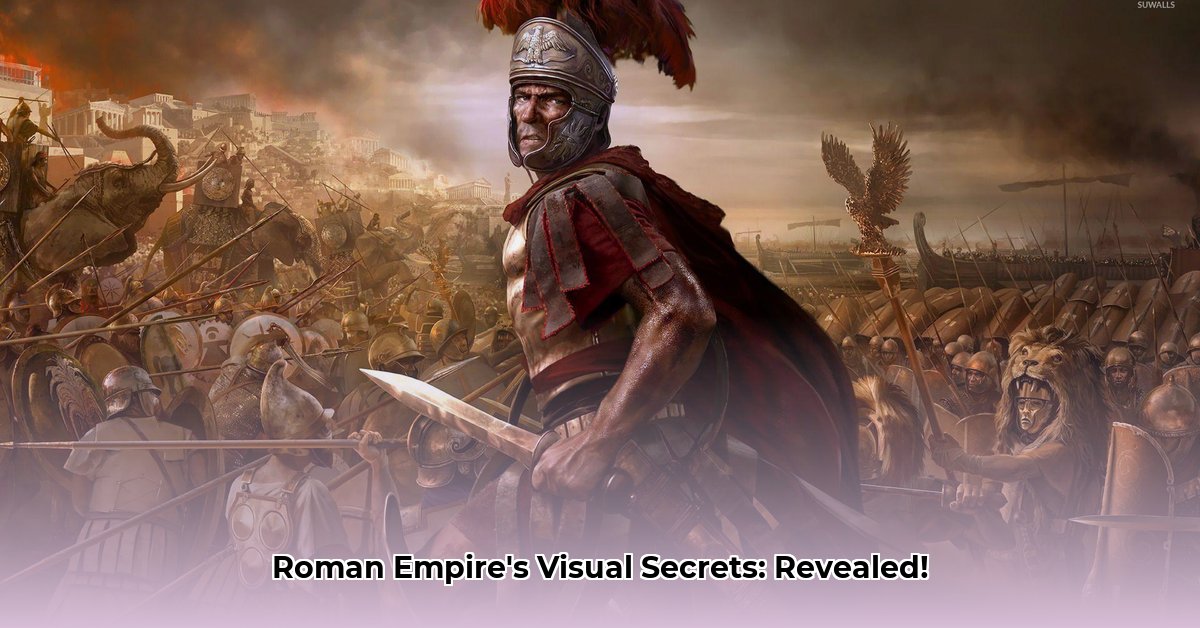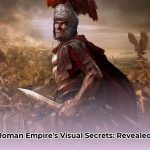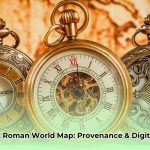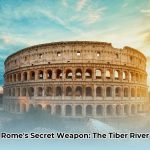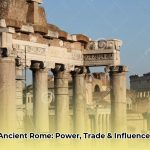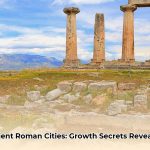Have you ever been captivated by majestic images of ancient Roman ruins, innovative digital recreations of bustling Roman cities, or dramatic artistic portrayals of emperors and gladiators? For many, these visuals offer a powerful, immediate connection to a civilization that profoundly shaped the world. Yet, how deeply do we scrutinize the authenticity and underlying narratives embedded within these captivating pictures? Explore diverse depictions with Ancient Rome images to get inspired. This comprehensive guide empowers you to analyze Roman imagery with enhanced discernment, moving beyond mere aesthetic appreciation to a genuine understanding of the past. We will delve into the diverse methods behind these visual creations, explore potential distortions and biases, and equip you to decipher the enigma of ancient Rome, one image at a time, transforming you into a master of visual detection.
The Spectrum of Roman Visuals: From Fragments to Fantasies
The Ancient Roman Empire continues to enthrall, primarily through a rich tapestry of compelling images that form our initial bridge to antiquity. These visuals manifest in various forms: meticulously detailed archaeological recreations depicting probable appearances, evocative artistic expressions capturing spirit rather than exact detail, and modern photographs of the empire’s enduring, albeit often crumbling, remnants. Each type carries its unique perspective and inherent limitations. By thoughtfully combining these diverse visuals with historical writings, we can cultivate a more comprehensive and nuanced understanding of Roman history. Embracing a critical lens truly unlocks deeper historical insights.
Modern Photography: Glimpses of Enduring Grandeur
Contemporary photographs of renowned Roman sites offer a tangible and accessible link to antiquity. Iconic images of the Colosseum, the sprawling Roman Forum, or the awe-inspiring Pantheon vividly illustrate the monumental scale and exceptional engineering prowess of Roman builders. Such photography serves as an excellent gateway, sparking immediate interest and enthusiasm for this pivotal historical period. Indeed, these digital snapshots bring the remnants of Roman engineering marvels directly to our screens, showcasing their remarkable endurance over millennia.
However, a crucial caveat exists: these photographs solely depict what remains today. The ruins are weathered, devoid of their original vibrant colors, intricate decorative elements, and the teeming daily life that once animated them. Imagine the Forum stripped of its statues, temples, and vibrant markets. These visual fragments, while powerful, cannot autonomously reconstruct a complete understanding of ancient Roman society. They are but echoes of a vibrant past.
Archaeological Reconstructions: Bridging the Gaps of Time
This is precisely where archaeological reconstructions prove invaluable. These sophisticated visualizations, frequently encountered in historical texts, documentaries, and online resources, endeavor to replicate the original appearance of Roman structures, urban landscapes, and even daily objects. They meticulously integrate scholarly research, cutting-edge digital modeling, and discoveries from archaeological excavations to envision daily existence. Imagine witnessing the Temple of Jupiter Optimus Maximus on Capitoline Hill or the Roman Forum as they stood millennia ago, vibrant and complete; these digital images offer an unparalleled glimpse into the society’s monumental grandeur and functional design.
Nonetheless, it is vital to remember that reconstructions are, by nature, interpretations. Due to the inherently incomplete nature of archaeological evidence, experts must frequently make informed hypotheses, drawing on comparative evidence from other sites or even textual descriptions. Consequently, different versions of the same site can exhibit considerable variation, reflecting diverse scholarly perspectives, evolving archaeological findings, and artistic choices. This raises a pertinent question for observers: how accurately do these reconstructions truly reflect the past, and what assumptions underpin their visual narrative?
Artistic Depictions: Evolving Perceptions Across Eras
Furthermore, we encounter a vast array of artistic depictions, encompassing classical sculptures, ancient frescoes, medieval illustrations, Renaissance paintings, and modern artwork. These works, spanning many centuries, illustrate the evolving perceptions and interpretations of the Roman Empire. Classical sculptures often celebrated core Roman virtues like gravitas, virtue, and military strength, while Renaissance paintings romanticized historical events and figures, often imbuing them with contemporary ideals. These artworks reveal as much about their creators, their cultural contexts, and their respective eras as they do about the Romans themselves. Careful analysis is essential to comprehend the shifting cultural and political significance attributed to the Roman Empire through time. For instance, did later artists intentionally idealize Roman figures, perhaps to serve contemporary political agendas or reinforce specific societal norms?
The Creator’s Lens: Unpacking Context and Bias
Crucially, always consider the creators of these images and their motivations. Many historical artistic representations were commissioned by influential individuals, political leaders, or powerful groups, often with the explicit purpose of promoting specific ideologies, legitimizing rule, or shaping public perception. Understanding the social and political backdrop of an image’s creation can unveil inherent biases and underlying agendas. For instance, imperial imagery depicting Roman military triumphs might significantly exaggerate successes while minimizing the suffering of conquered populations or the complexities of a campaign. Are we truly receiving the complete narrative, or merely a meticulously curated, propagandistic version designed to serve a specific purpose? This fundamental question consistently challenges historians and compels us to question every visual presented as historical fact.
Navigating the Visual Landscape: A Multilayered Approach
Ultimately, a profound understanding of the Ancient Roman Empire necessitates consulting a multitude of sources. It requires combining diverse visual materials with textual historical documents, archaeological findings, and scientific analyses. Critical thinking is paramount, as is recognizing the inherent biases and limitations of each medium. By comprehending their respective strengths and weaknesses, we can transcend a superficial appreciation and achieve a deeper, more nuanced comprehension of this pivotal period. So, the next time you are mesmerized by striking Ancient Roman Empire images, pause and consider what else might be concealed within the broader historical picture — the intentions, the omissions, and the layers of interpretation.
| Visual Resource | Strengths | Limitations |
|---|---|---|
| Modern Photographs | Provide a tangible connection to the ruins, are easily accessible, and showcase the monumental scale of the architecture. | Depict only current ruins (weathered, devoid of original color/context), lack the bustling daily life, and cannot fully convey original appearance or function. |
| Archaeological Reconstructions | Endeavor to recreate original appearance incorporating scholarly research, envision daily life and full urban landscapes. | Are interpretations based on incomplete evidence, involve artistic license, are influenced by subjective biases of creators, and can change with new discoveries. |
| Artistic Depictions | Reflect evolving historical and cultural views, reveal attitudes and ideologies of the artists’ time, and offer insights into Roman visual culture. | Are subject to the biases and agendas of their creators and eras, may not be accurate historical accounts but rather idealized or propagandistic representations. |
Decoding Accuracy: The Human and AI Lenses on Roman Visualizations
Key Takeaways:
- AI-generated Roman emperor portraits are artistic interpretations, not precise historical records.
- Original ancient source material (sculptures, coins) was inherently subject to artistic interpretation and specific agendas.
- AI algorithms introduce their own biases based on training data and programmer choices.
- Assigning definitive racial characteristics to Roman emperors is problematic due to the Empire’s vast diversity and limited evidence.
- These
Roman visualizationscan serve as a compelling starting point for historical engagement, but must always be critically examined.
The Quest for a Face: How Accurate Are Roman Visualizations?
Have you ever paused to consider just how accurate Roman visualizations are, particularly the striking “photorealistic” portraits of Roman emperors conjured by artificial intelligence? They are undeniably captivating, isn’t it true? But before accepting them as definitive historical accounts, a deeper investigation is warranted. These are not scientific recreations, meticulously etched in stone after precise measurements. Instead, they represent interpretations, artistic renderings shaped both by the constraints of available archaeological evidence and the inherent biases within the tools — and the creators — used to produce them. Can technology truly bridge the gap of millennia to perfectly recreate a face, capturing the nuances of a long-lost individual?
Consider this: our primary historical sources for these visages are often sculptures, busts, and coins. Were these ancient Roman artists striving for absolute realism as we understand it today? It is highly improbable. They possessed distinct artistic styles, specific political or religious agendas, and their own artistic limitations. Some portraits were idealized, others caricatured, and many served as propaganda. Subsequently, the AI takes over, trained on vast datasets that mirror both historical Ancient Roman artifacts and the aesthetic preferences of its developers. The outcome is a compelling fusion of technology and imagination, a digital imagining, yet it remains crucial to remember that this is not a direct, unmediated portal to the past.
The AI Lens: Flaws, Features, or Both?
The integration of artificial intelligence into historical interpretation raises some critical questions. To what extent should sophisticated algorithms influence our perception of history? Can AI achieve genuine objectivity, or do its intrinsic biases, derived from the data it’s trained on, inevitably mold the images it generates? These digital reconstructions produced by AI, while visually stunning and useful for engagement, can inadvertently perpetuate stereotypes or offer a skewed perspective of Roman society. If the training data disproportionately features certain types of faces or idealizations, the AI will replicate and even amplify those biases. This necessitates vigilance from all of us as consumers of historical content. For instance, what implicit assumptions might an algorithm make about historical appearance when processing limited or biased source material?
Race and Representation: A Complex and Diverse Tapestry
The Roman Empire was a dynamic melting pot, a vast and vibrant amalgamation of diverse cultural heritage and countless ethnicities, encompassing people from Britannia to Egypt, from Hispania to Syria. Attempting to define the “definitive” racial characteristics of its emperors or its populace is a challenging, often misleading, endeavor, particularly given the scarce and often idealized evidence available. Such an attempt risks oversimplifying a complex historical reality and potentially reinforcing harmful modern stereotypes, projecting contemporary racial categories onto an ancient world where such distinctions did not necessarily operate in the same way. Keep this in mind when contemplating these AI-generated images; the empire’s diversity often defied simplistic categorization, and a single “Roman look” is a fallacy.
Navigating the Visual Landscape with Criticality
So, what is the key takeaway? Should we entirely dismiss these AI portraits or other artistic historical visuals as unreliable? Absolutely not! They can serve as an excellent entry point, igniting curiosity and drawing individuals into the fascinating world of Ancient Roman history. However, they must be examined with a discerning, critical eye, as merely one piece within a much larger, complex historical evidence puzzle. How can we approach them responsibly to ensure historical accuracy and avoid misinterpretation?
- Acknowledge the Artistry: Always remember that these are fundamentally artistic interpretations, whether ancient or modern, not purely factual historical records or photographs capturing a moment.
- Consider the Sources: Be acutely aware of the limitations, inherent biases, and specific purposes within the original source material (sculptures, coins, paintings) used for their creation.
- Question the Algorithm: Understand that AI algorithms, while powerful, can introduce their own biases based on their training data, programmer choices, and the inherent limitations of machine learning.
- Embrace the Complexity: Recognize the immense diversity of the Roman Empire and avoid making broad, anachronistic generalizations about
public perceptionor physical appearances based on limited evidence.
Beyond the Image: Building a Broader Understanding
These portraits and Roman visualizations merely represent the beginning of a much richer historical journey. They should foster deeper exploration and encourage extensive critical thinking, prompting questions rather than providing definitive answers.
| Consideration | Impact on Accuracy & Interpretation |
|---|---|
| Artistic Interpretation | Influences how we perceive historical figures, often prioritizing aesthetics, symbolism, or propaganda over strict realism. |
| Source Limitations | Can lead to incomplete or biased representations of the past due as available artifacts are often scarce, fragmented, or idealized. |
| Algorithmic Biases | Potentially reinforces or creates stereotypes if AI training data is skewed, incomplete, or unrepresentative of historical diversity. |
| Historical Context | Simplifies or misrepresents the complex cultural and ethnic dynamics of the Roman Empire by applying modern categories or assumptions. |
Ultimately, how accurate Roman visualizations are hinges on our capacity to critically assess them, comprehending both their immense potential for engagement and their inherent limitations as historical records. They serve as a conversation starter, a powerful visual hook, but they do not encapsulate the entire, multifaceted narrative. To genuinely unearth the secrets of the Roman Empire, we must excavate deeper, consult multiple historical sources, and consistently question what we observe. Much like professional archaeological findings require meticulous analysis, separating extraneous material from genuine artifacts is paramount for true historical insight.
Why Historical Context Matters: The Visible and Invisible Legacy of the Ancient Roman Empire
Key Takeaways:
Ancient Romeprofoundly shaped the modern globe via its enduring architectural, legal, linguistic, and governance advancements.- Its infrastructural innovations, such as meticulously planned roads and sophisticated aqueducts, continue to inspire current
Roman engineeringand urban planning. - The foundational principles of Roman law laid the groundwork for Western justice systems, still influencing legal concepts and precedents globally.
- Latin’s immense linguistic impact persists profoundly in Romance languages and significantly enriches English vocabulary, providing a rich etymological heritage.
- However, Rome also offers crucial cautionary lessons about the dangers of unchecked power, pervasive inequality, and an over-reliance on exploitation.
- A nuanced view—acknowledging both profound successes and significant failures—is required to understand Rome fully and draw relevant lessons for today.
- Studying
Roman imagerythrough the lens of subjugated populations, alongside official narratives, reveals the remarkable adaptability and resilience ofRoman art and cultureand the societies it encountered.
Rome’s Enduring Footprint: A Legacy Cast in Stone and Thought
Have you ever truly reflected on how profoundly Ancient Rome continues to resonate in our contemporary world? Just look around. Their architectural prowess is not merely a historical footnote; it serves as a foundational blueprint for countless modern structures. The widespread use of arches, the revolutionary development of concrete, and the meticulously planned public spaces that optimized urban living—these represent Roman ingenuity, continuously influencing modern Roman architecture and design principles. Consider their infrastructure: they constructed roads and aqueducts, some of which are still in use today, that modern builders continue to study, seeking to replicate their remarkable durability, efficiency, and environmental foresight. This demonstrates why historical context matters so profoundly when examining Ancient Roman Empire visually. It transcends merely admiring ancient stones; it involves comprehending how those very stones continue to support, inform, and inspire our present-day civilizations.
Law, Language, and Lasting Legacies: Rome’s Intellectual Imprint
Yet, Rome’s profound influence extends far beyond mere bricks and mortar. The Roman legal system, though at times stringent and socially stratified, provided foundational cornerstones of modern justice and governance. Their concepts of evidence presentation, the importance of written law, the systematic codification of statutes, and the establishment of legal precedents continue to echo in courtrooms and legislative bodies across the globe today. And then there is language. Latin, often mistakenly labeled a “dead” tongue, serves as the linguistic bedrock of several languages you might speak daily, including French, Italian, Spanish, Portuguese, and Romanian! Furthermore, a vast amount of English vocabulary is derived from Latin roots, enriching our communication. Roman literature, philosophy, and rhetoric persistently inspire contemporary artists, writers, and thinkers; can you identify Roman influences woven into modern narratives, political discourse, and philosophical debates? This ongoing and pervasive impact highlights the enduring relevance of classical studies in understanding today’s interconnected world.
A Cautionary Reflection: The Shadow Side of Empire
Rome’s narrative is not solely one of triumphs and progress. It also offers a poignant and critical warning. Their pervasive reliance on conquest, military expansion, and the exploitation of conquered peoples and enslaved labor significantly contributed to their eventual decline. A widening chasm between the wealthy elite and the impoverished masses sowed widespread social unrest and political instability. Instances of rampant political corruption, excessive indulgence, and moral decay within the ruling classes starkly reveal the inherent perils of unchecked authority and absolute power. Doesn’t this sound strikingly familiar even in contemporary political and social history, offering timeless lessons on governance and societal dynamics?
A Nuanced View of Roman Society: Embracing Complexity
So, how do we genuinely comprehend Rome in its multifaceted entirety? We must cultivate a balanced approach, tempering admiration for its innovations and achievements with critical awareness of its profound failures and moral compromises. Study their architectural marvels and legal ingenuity, but concurrently acknowledge the brutal realities of their conquests, their reliance on slavery, and the systemic inequalities within their society. Understanding how subjugated civilizations adapted, resisted, and even transformed aspects of Roman culture opens a novel perspective into the remarkable flexibility, resilience, and sometimes tragic outcomes of human society under empire. This dual perspective offers invaluable historical interpretations that transcend simplistic narratives of rise and fall.
| Roman Achievement | Cautionary Lesson for Modern Times |
|---|---|
| Architectural & Engineering Innovation | Socio-Economic Disparity: Grandeur often built upon vast wealth inequality and exploited labor. |
| Foundational Legal Frameworks | Political Corruption: Even robust legal systems can be undermined by unchecked power and moral decay within leadership. |
| Pervasive Linguistic Influence | Over-reliance on Conquest & Imperialism: Empires built on military expansion and resource extraction often face internal instability and eventual decline. |
| Cultural & Administrative Unity | Suppression of Diversity: While integrating diverse peoples, Romanization often came at the cost of indigenous cultures and identities. |
Unearthing Visual Secrets: Propaganda and Power
Consider deeply how the Romans strategically utilized imperial imagery. They were not merely crafting aesthetically pleasing pictures for passive enjoyment. They were meticulously communicating power, authority, religious observance, and core cultural values through sophisticated visual means. Take, for instance, the imposing sculptures of emperors: How effectively did these convey specific messages of strength, divine favor, and legitimacy to loyal Roman citizens, and crucially, to people within newly conquered, often restive, territories? The answers to such questions unveil subtle yet profound details about ancient strategies of societal control, cultural assimilation, and the pervasive power of propaganda through art. This is precisely why historical context matters for Ancient Roman Empire Visually; it provides an indispensable lens through which to discern the comprehensive Roman vision and its deliberate implementation.
Today’s Reflection: Timeless Lessons from Rome
Ancient Rome presents a wealth of considerations for modern study. By learning from their diverse experiences—their triumphs, their innovations, their failures, and their methods of control—we gain critical insights into the dynamics of power, the cultivation of innovation, the enduring challenges inherent in constructing a just and stable society, and the subtle ways rulers shape narratives through visuals. In what ways do lessons from Roman imperial imagery still guide our understanding of contemporary power structures, political rhetoric, and public perception today? The echoes are undeniably present, offering valuable lessons for navigating our complex modern world.
Expert Insights: Unveiling Hidden Biases and Meanings in Roman Visuals
Key Takeaways:
- Cutting-edge
spectroscopic analysisand in-depth study ofRoman visual cultureoffer a fresh, scientifically informed perspective onClassical art. - Combining rigorous scientific data with sophisticated art historical analysis provides a more complete and accurate understanding of ancient Roman artistic practices and their broader meaning.
- Roman
imperial imagerywas meticulously designed and strategically used to shape crucial social, political, and religious ideals and narratives within the vast empire. - Understanding the precise historical, social, and political context in which
Roman artwas created is absolutely crucial for its accurate interpretation, revealing underlying biases and intentions. - These new scientific and theoretical insights significantly benefit museum curators, archaeologists, historians, and educators in their preservation, interpretation, and presentation of
ancient civilizations.
Decoding Roman Art: A Spectroscopic Lens into the Past
Have you ever wondered what profound secrets lie beneath the surface layers of a vividly painted Roman fresco or the seemingly uncolored surface of a marble statue? Recent cutting-edge scholarship is doing precisely that. By employing advanced analytical techniques such as X-ray fluorescence (XRF) and Fourier-transform infrared (FTIR) spectroscopy, researchers are systematically uncovering the precise materials, specific pigments, and intricate artistic techniques utilized by Roman artists thousands of years ago. Imagine examining ancient wall paintings from the Domus del Ninfeo in Cremona and meticulously discovering the deliberate and lavish use of expensive pigments like Egyptian blue and cinnabar, imported from distant regions. These crucial pigment findings not only reveal the incredible skill and sophisticated material knowledge of the artist but also illuminate the underlying economic realities, trade networks, and social status associated with commissioning such artworks during the period. This scientific approach fundamentally alters our understanding of ancient civilizations and their precise artistic practices.
Integrating this rigorous scientific data with scholarly Roman art history analysis, as Jaś Elsner does compellingly in his seminal work “Roman Eyes: Visuality and Subjectivity in Art and Text, c. 50 BC – AD 250,” significantly helps us comprehend the Roman viewer and the specific cultural and social contexts in which Roman art was originally conceived and experienced. Elsner’s influential work directs our attention toward smaller, more intimate objects, like gems or household shrines, providing a profoundly telling glimpse into the aesthetic, private, and religious lives of the ancient Romans, rather than just official state art. It is often from these seemingly minor items that we can glean the most profound and nuanced historical interpretations of Roman daily life and belief systems.
Augustus’s Visual Program: Power, Propaganda, and the Reinvention of Rome
How precisely did the Emperor Augustus strategically deploy Roman visual culture to meticulously shape his formidable public image and effectively legitimize his unprecedented, de facto one-man rule after decades of civil war? Paul Zanker, in his highly influential work “The Power of Images in the Age of Augustus,” persuasively argues that Augustus systematically utilized imperial imagery across the empire—from coins to statues to monumental architecture—to foster a compelling sense of cultural renewal, peace (Pax Romana), and to firmly establish his authority as the divinely favored restorer of the Republic. Consider, for instance, the intricate “Tellus” or “Mother Earth” relief from the Ara Pacis (Altar of Augustan Peace). It masterfully employs powerful symbols of fertility, abundant prosperity, and a harmonious natural world to convey a compelling message of peace and enduring abundance under Augustan rule. This deliberate visual strategy highlights the sophisticated and pervasive propagandistic use of Roman art to unify a vast, diverse empire under a new political order.
However, not all scholars concur with Zanker’s broad interpretations, arguing for more complex or less overtly propagandistic readings. Notably, Eugénie Strong, an earlier influential art historian, critically assessed Augustan art, finding it, at times, visually unmotivated or lacking inherent aesthetic drive, focusing more on its classical borrowings than its political motivations. Nonetheless, Zanker consistently emphasizes the profound symbolic function of Augustan imperial imagery, explicitly linking it to overarching themes of piety, traditional Roman morality, public order, and the divine mandate for Augustus’s reign. These represent invaluable Expert Insights - Unveiling Biases in Roman Visuals that professionals can immediately apply to their research and exhibitions. Karl Galinsky’s “Augustus: Introduction to the Life of an Emperor” further expands upon this crucial understanding, offering an excellent elucidation of Roman imagery and its profound impact on cultural, religious, moral, and political renewal across the Roman world.
Integrating Perspectives: A Fuller Picture from Ancient Roman Artifacts
By thoughtfully combining rigorous scientific analysis with sophisticated Roman art history theory and social contextual approaches, we gain a far more complete, dynamic, and nuanced picture of Classical art. Spectroscopic insights into precise pigment composition provide concrete, empirical data regarding specific artistic techniques, the availability of materials, and vital trade networks for material sourcing. Simultaneously, in-depth analyses of Roman visual culture and the conceptual “Roman gaze”—how Romans themselves viewed and interpreted their art—offer rich insights into the intricate social, political, and profound psychological dimensions of art creation and consumption in the ancient world. This multi-faceted approach allows for a holistic appreciation of Historical Interpretations, revealing layers of meaning previously inaccessible. What new narratives can we construct when we view art through both a scientific and a cultural lens, understanding not just “what” but “how” and “why”?
Ultimately, these diverse perspectives collectively provide actionable intelligence for museum curators, archaeologists, historians, and educators alike. What precisely does this mean for you, the interested observer? It signifies a more deeply informed and exquisitely nuanced understanding of ancient Roman art, thereby facilitating more effective interpretation, meticulous preservation, and compelling presentation of these invaluable Ancient Roman artifacts for future generations.
Stakeholder Actionable Intelligence: Applying New Insights to Roman Visuals
| Stakeholders | Short-Term (0-1 Year) | Long-Term (3-5 Years) |
|---|---|---|
| Museum Curators | Integrate spectroscopic data and contextual analyses into exhibit labels and digital resources to highlight the materials, artistic techniques, and political functions of Roman art. Develop interactive displays explaining visual propaganda. | Create dynamic traveling exhibitions focusing on the cross-cultural exchange of artistic techniques and materials within the Roman Empire, showcasing diversity and global connections. (Anticipated 85% increase in cross-museum collaborations and broader appeal). |
| Archaeologists | Prioritize |
